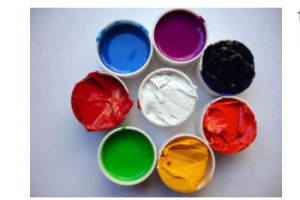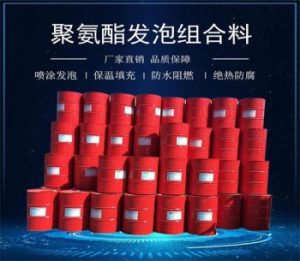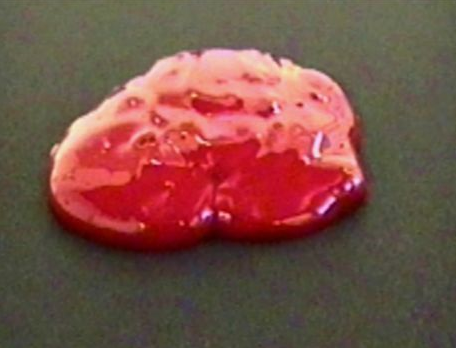Introduction
Disperse dyes are the most important and main category in the dye industry. They are non-ionic dyes that do not contain strong water-soluble groups and are dyed in a dispersed state during the dyeing process. Mainly used for printing and dyeing of polyester and its blended fabrics. It can also be used for printing and dyeing synthetic fibers such as acetate, nylon, polypropylene, chlorine, and acrylic.
1. Overview of disperse dyes

1. Introduction:
Disperse dye is a dye that is slightly soluble in water and highly dispersed in water through the action of a dispersant. Disperse dyes do not contain water-soluble groups and have low molecular weight. Although the molecules contain polar groups (such as hydroxyl, amino, hydroxyalkylamino, cyanoalkylamino, etc.), they are still non-ionic dyes. This type of dye requires high post-processing requirements. It usually needs to be ground in a grinder in the presence of a dispersant to become highly dispersed and stable crystal particles before use. The dye liquor of disperse dyes is a uniform and stable suspension.
2. History:
Disperse dyes were produced by the Baden Aniline Soda Company in Germany in 1922 and are mainly used for dyeing polyester fibers and acetate fibers. At that time it was mainly used for dyeing acetate fiber. After the 1950s, with the emergence of polyester fiber, it developed rapidly and became a major product in the dye industry.
2. Classification of disperse dyes
1. Classification according to molecular structure:
According to the molecular structure, it can be divided into three categories: azo type, anthraquinone type and heterocyclic type.
The chromatogram of the azo type is relatively complete, with various colors such as yellow, orange, red, purple, and blue. Azo disperse dyes can be produced according to general azo dye synthesis methods, with simple process and low cost. (Accounting for about 75% of disperse dyes)
Anthraquinone types are available in red, purple, blue and other colors. (Accounting for about 20% of disperse dyes) A dye race famous for its bright colors – anthraquinone dyes
Heterocyclic dyes are a newly developed type of dyes with bright colors. (Heterocyclic types account for about 5% of disperse dyes)
The production process of anthraquinone-type and heterocyclic disperse dyes is more complicated and the cost is higher.
2. Classification according to application heat resistance:
Can be divided into low temperature type, medium temperature type and high temperature type.
Low-temperature dyes have low sublimation fastness and good leveling properties, and are suitable for exhaust dyeing. They are often called E-type dyes;
High-temperature dyes have high sublimation fastness but poor leveling properties. They are suitable for hot-melt dyeing and are called S-type dyes;
Medium-temperature dyes, whose sublimation fastness is between the above two, are also called SE-type dyes.

3. Terminology related to disperse dyes
1. Color fastness:
The color of a textile is related to its resistance to various physical, chemical, and biochemical effects during the dyeing and finishing process or during use and consumption.
2. Standard depth:
The recognized depth standard series defines medium depth as 1/1 standard depth. Colors of the same standard depth are psychologically equivalent, allowing color fastness to be compared on the same basis. At present, it has developed to a total of six standard depths: 2/1, 1/1, 1/3, 1/6, 1/12 and 1/25.
3. Dyeing depth:
Expressed as the percentage of dye weight to fiber weight, the dye concentration varies according to different colors. Generally, the dyeing depth is 1%, the dyeing depth of navy blue is 2%, and the dyeing depth of black is 4%.
4. Discoloration:
After certain treatments, the color of dyed fabric changes in shade, depth or brightness, or the combined result of these changes.
5. Staining:
After certain treatment, the color of the dyed fabric is transferred to the adjacent lining fabric, causing contamination of the lining fabric.
6. Use gray sample card to evaluate discoloration:
In the color fastness test, the standard gray sample card used to evaluate the degree of discoloration of dyed materials is generally called the discoloration sample card.
7. Use gray sample card to evaluate staining:
In the color fastness test, the standard gray sample card used to evaluate the degree of staining of dyed materials on the adjacent fabric is generally called the stain sample card.

8. Color fastness rating:
Based on the color fastness test, the degree of discoloration of dyed fabrics and the degree of staining of adjacent fabrics, the color fastness properties of textiles are rated. Except for the eight-level light fastness (except AATCC standard light fastness), the rest are in the five-level system. The higher the level, the better the fastness.
9. Lining fabric:
In the color fastness test, undyed white fabric is processed together with the dyed fabric in order to determine the staining degree of the dyed fabric to other fibers.
4. Common color fastness of disperse dyes
1. Color fastness to light:
The ability of textile color to withstand artificial light exposure.
2. Color fastness to washing:
The resistance of textile color to washing under different conditions.
3. Color fastness to rubbing:
The color resistance of textiles to rubbing can be divided into dry and wet rubbing fastness.
4. Color fastness to sublimation:
The degree to which the color of textiles resists the action of heat and sublimates.
5. Color fastness to perspiration:
The color resistance of textiles to human sweat can be divided into acid and alkali perspiration fastness according to the acidity and alkalinity of the sweat tested.
6. Smoke fading fastness:
The ability of textile color to resist nitrogen oxides in smoke. Among disperse dyes, especially those with anthraquinone structure, the dye will change color when encountering nitric oxide and nitrogen dioxide.
7. Color fastness to hot pressing:
The ability of textile color to resist ironing and roller processing.
8. Color fastness to dry heat:
The ability of textile color to resist dry heat treatment.